Machine Learning Developer Resume Examples
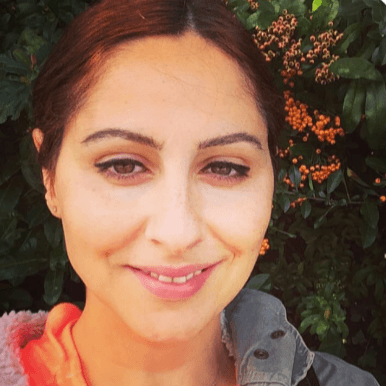
Jul 18, 2024
|
12 min read
Sharpen your machine learning resume: Make your skills stand out and land your dream job. Tailor your resume to showcase your experience in AI and data science. Boost your chances with tips that will make you a “data” to remember!
Rated by 348 people
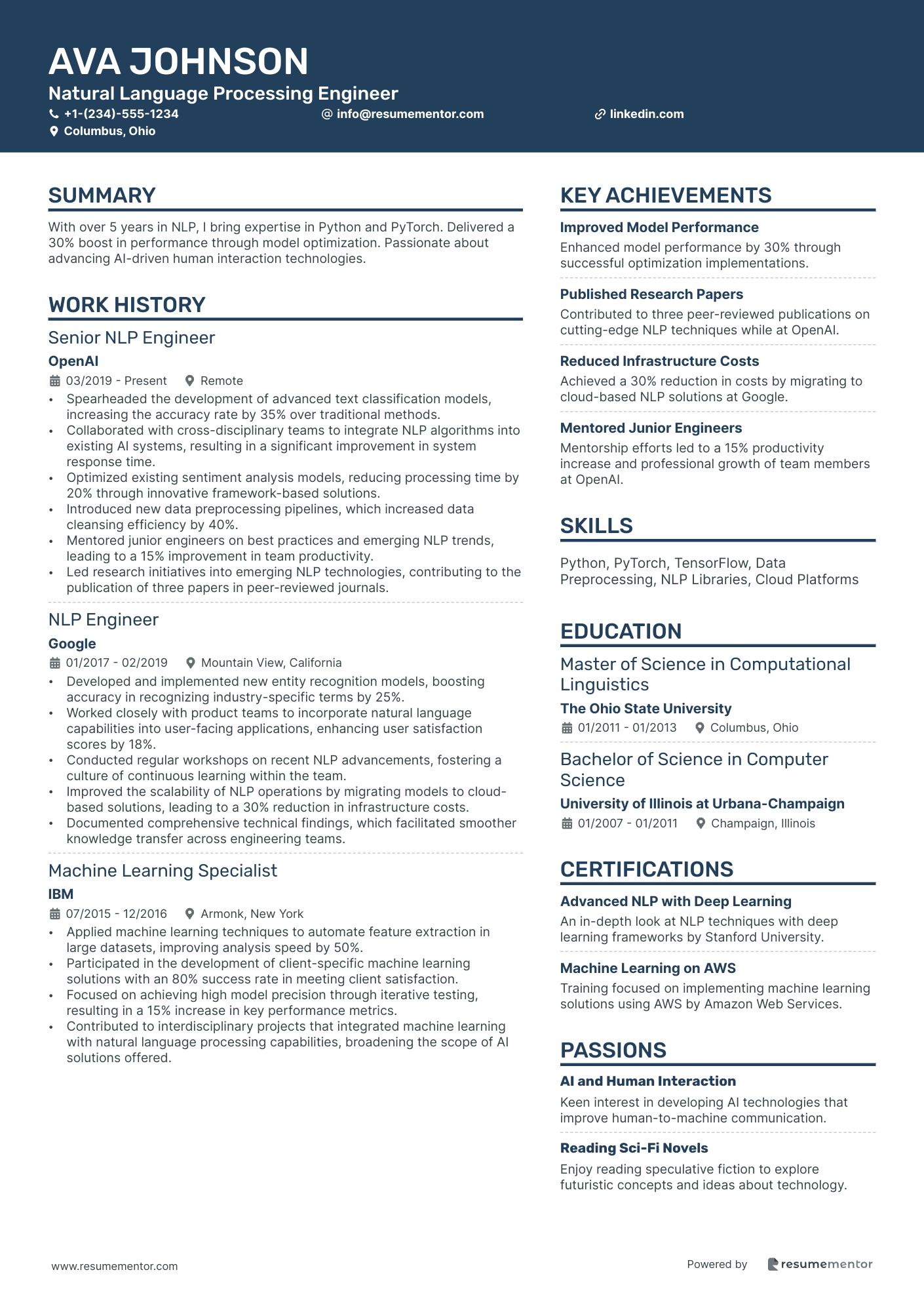
Natural Language Processing Engineer
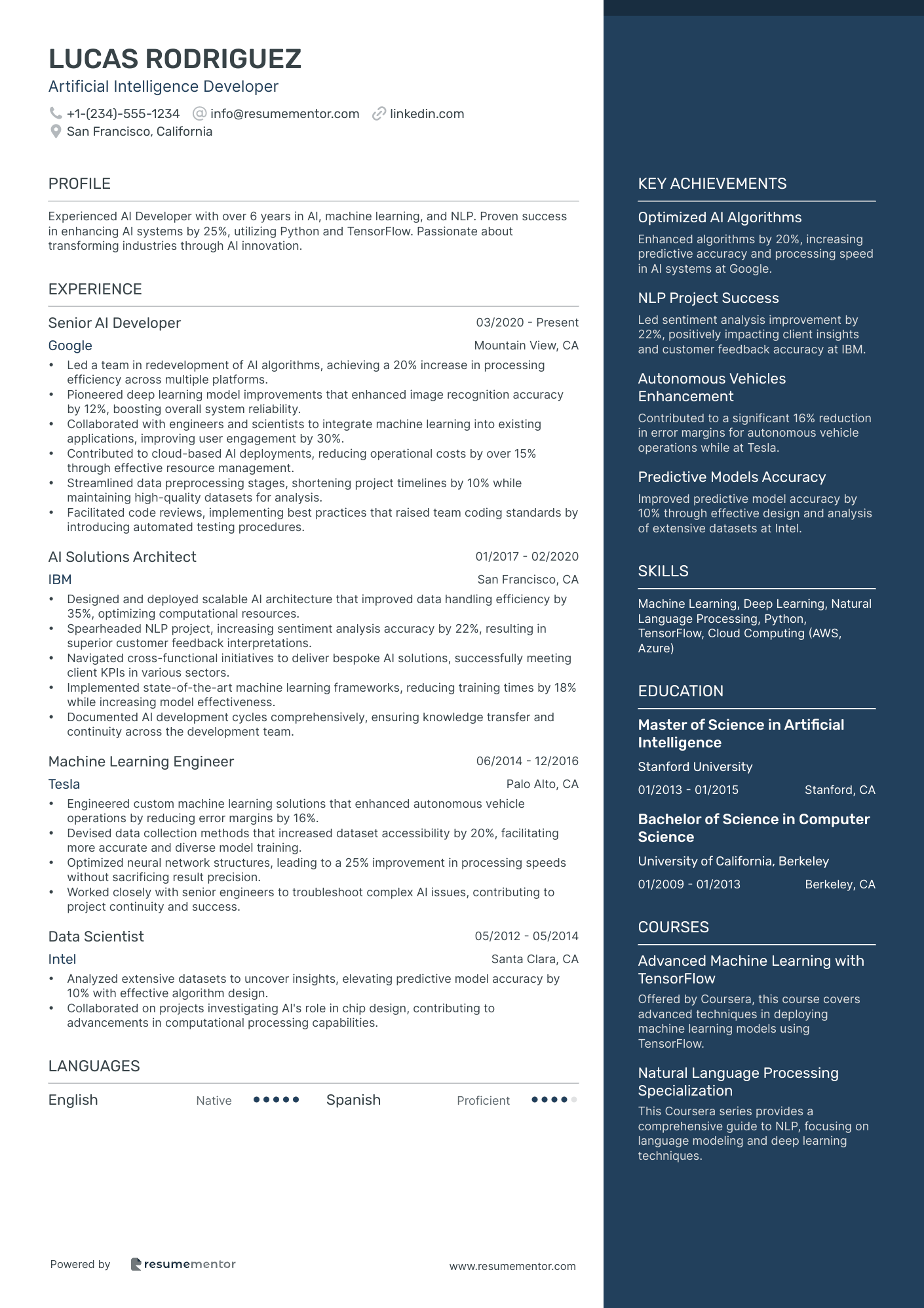
Artificial Intelligence Developer
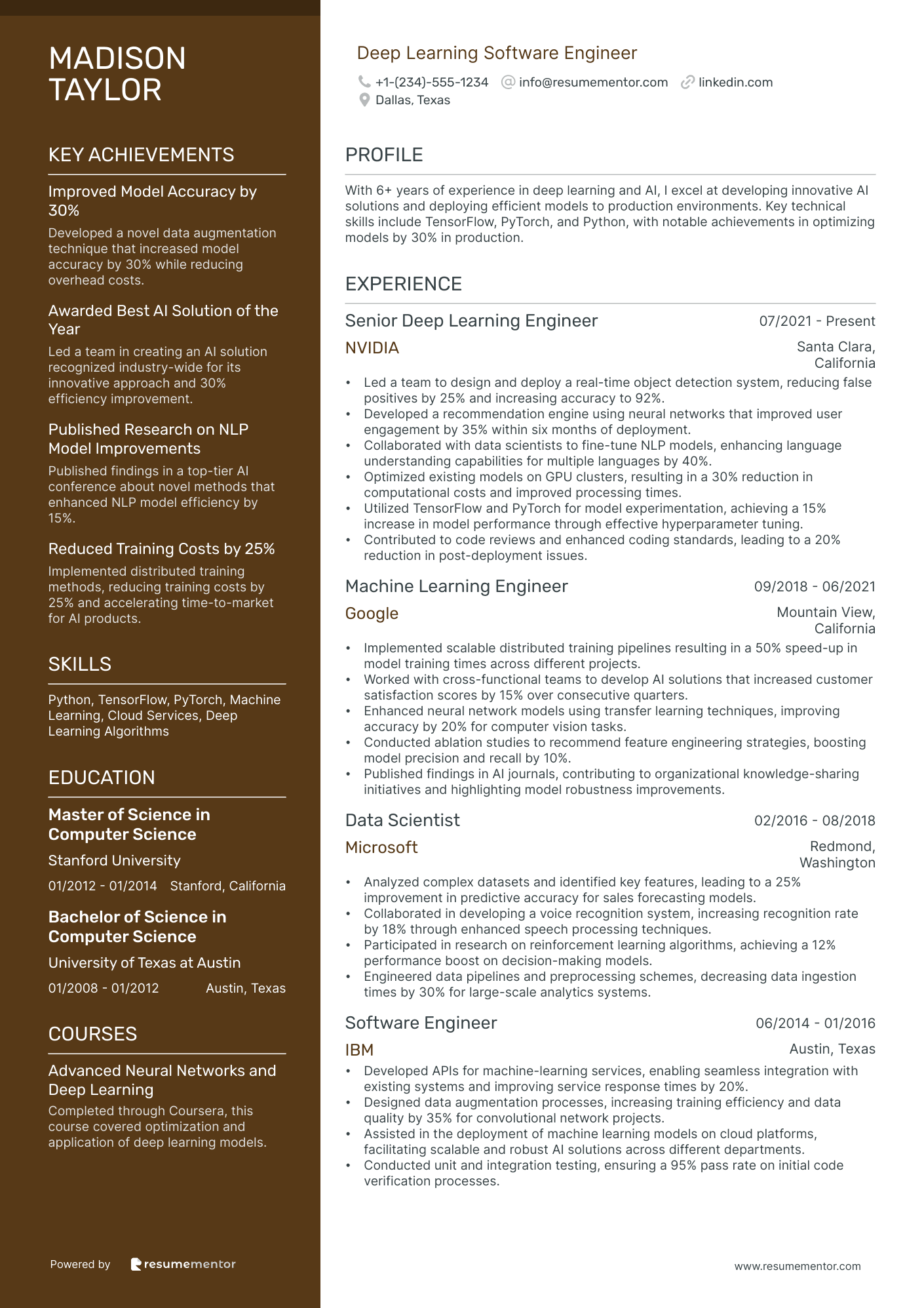
Deep Learning Software Engineer
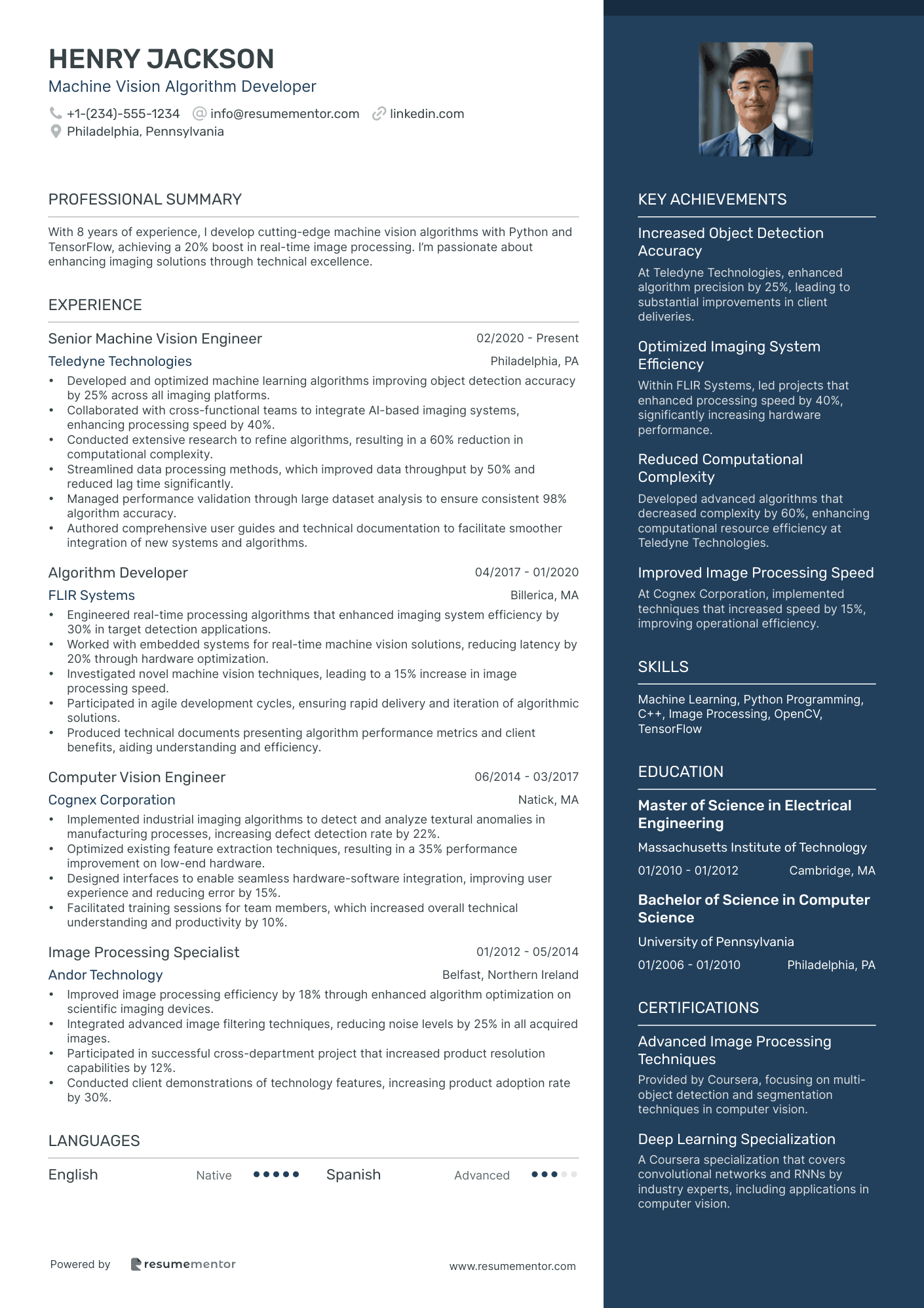
Machine Vision Algorithm Developer
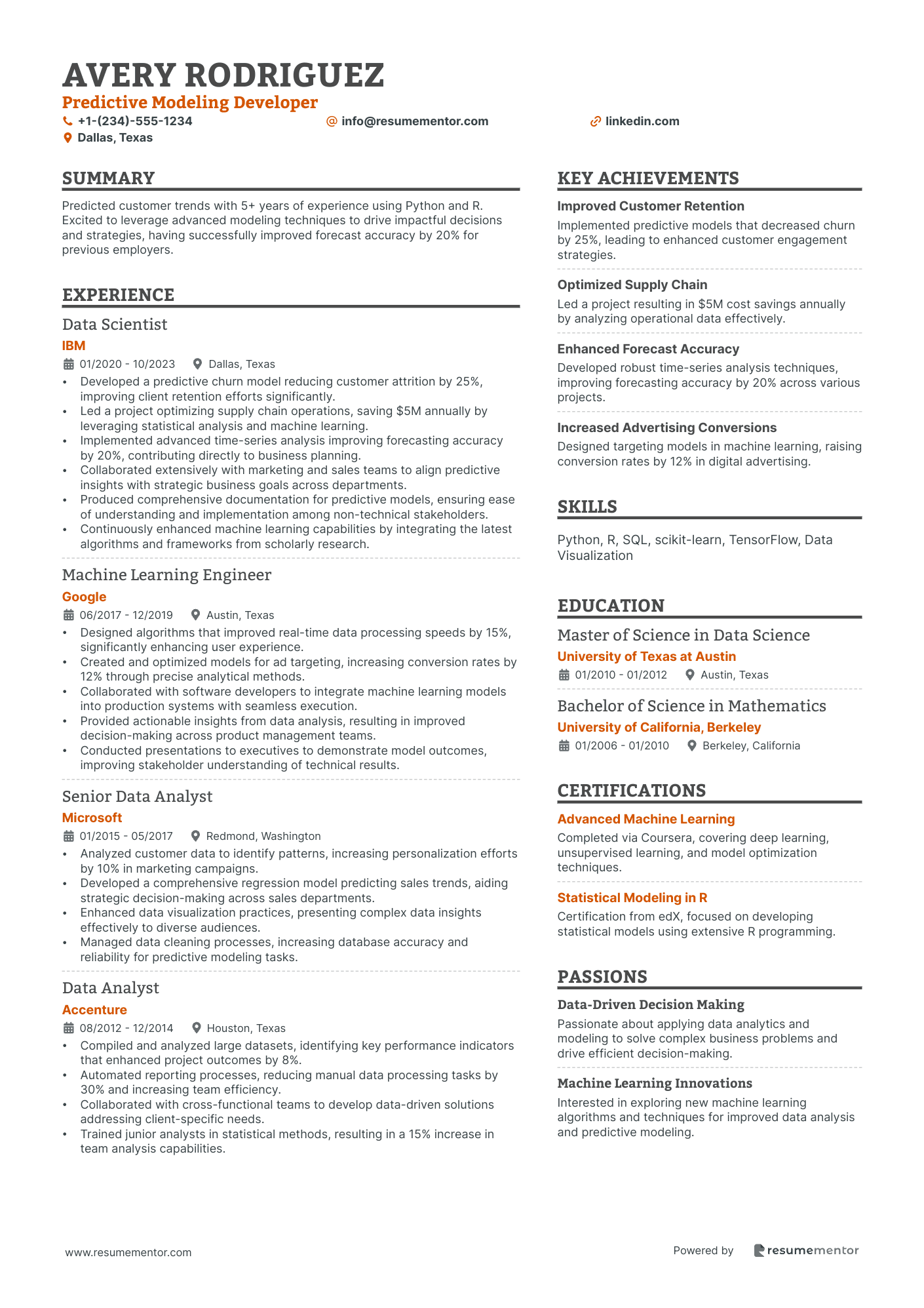
Predictive Modeling Developer
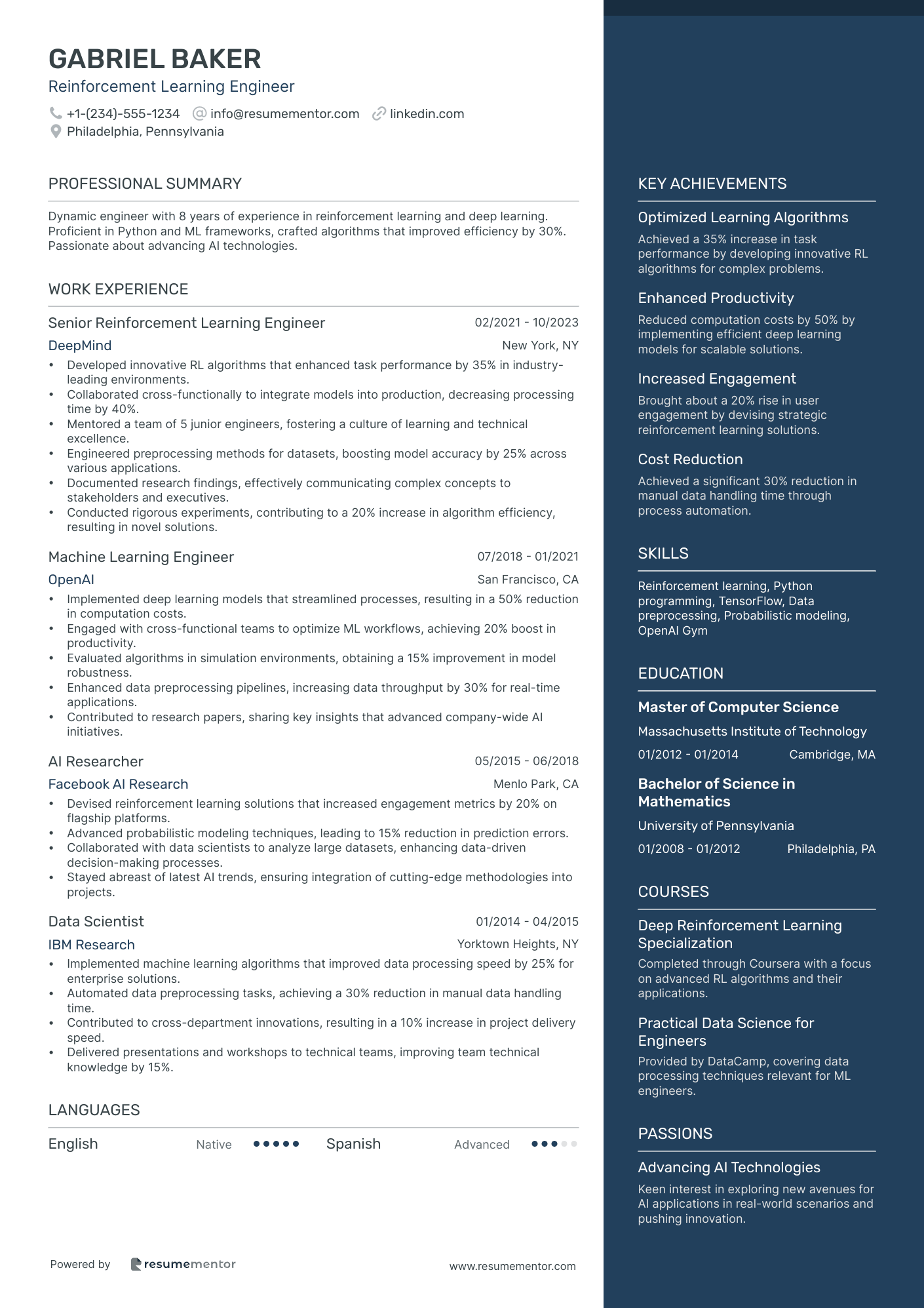
Reinforcement Learning Engineer
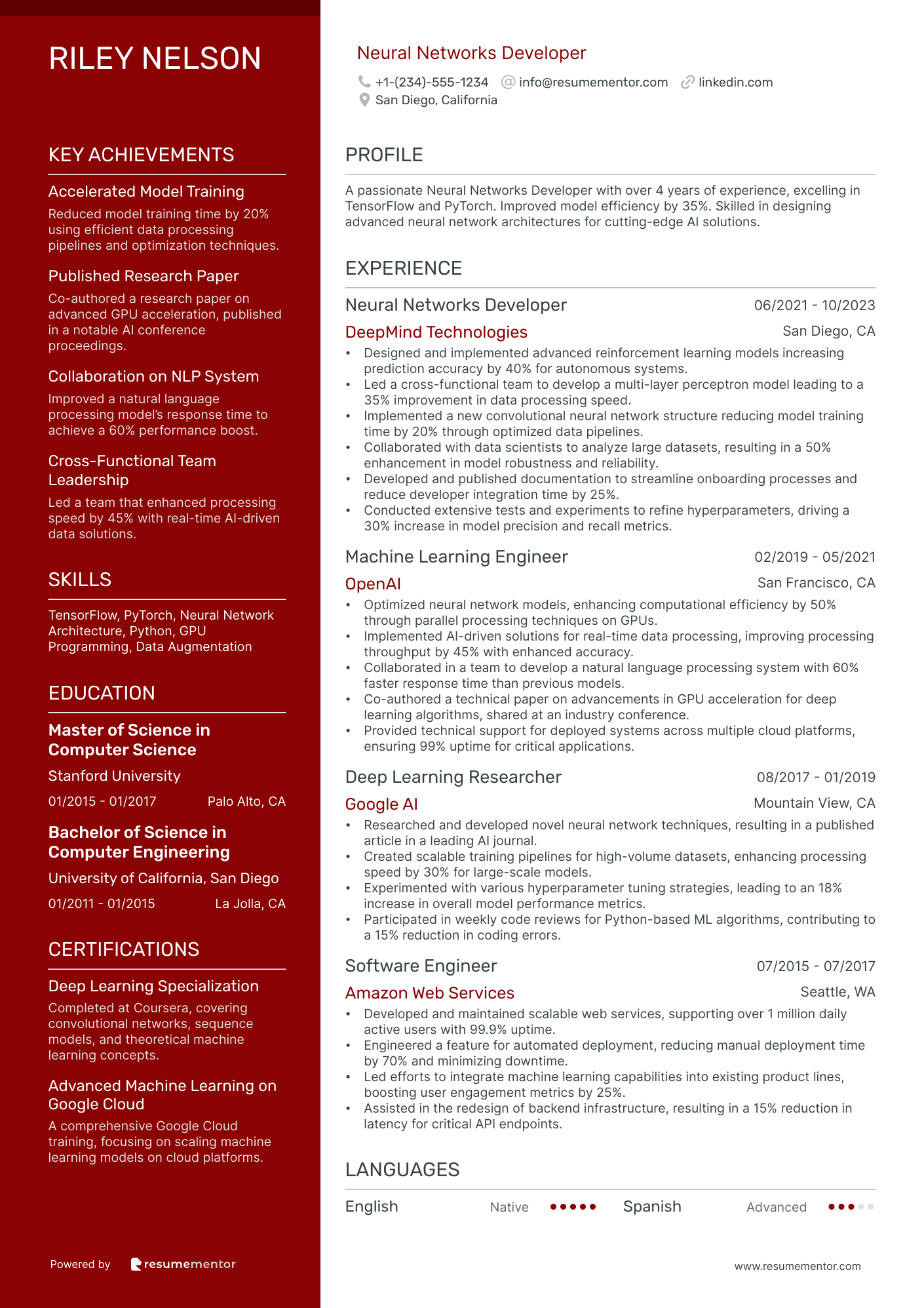
Neural Networks Developer
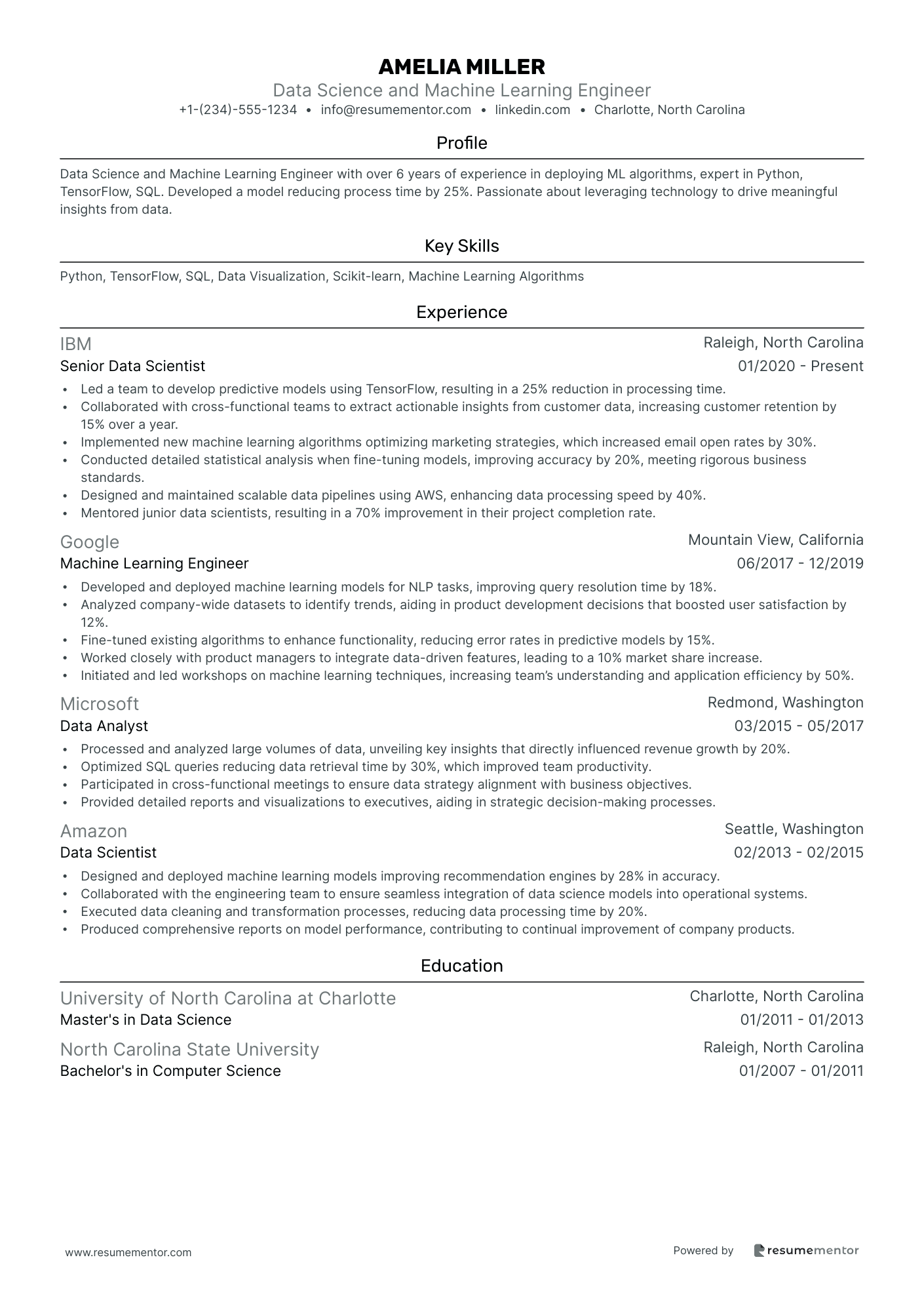
Data Science and Machine Learning Engineer
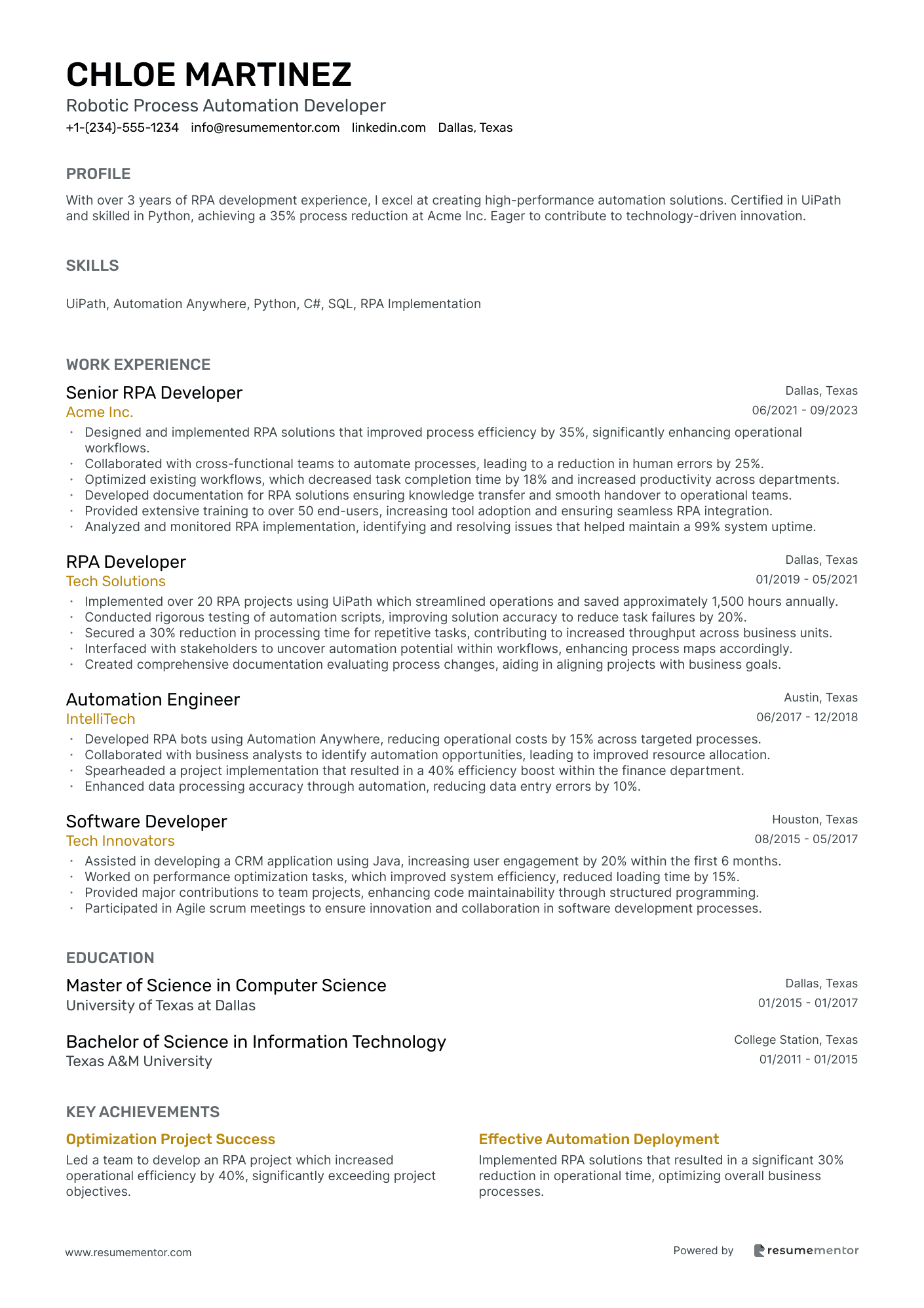
Robotic Process Automation Developer

Autonomous Systems Developer

Natural Language Processing Engineer resume sample
- •Spearheaded the development of advanced text classification models, increasing the accuracy rate by 35% over traditional methods.
- •Collaborated with cross-disciplinary teams to integrate NLP algorithms into existing AI systems, resulting in a significant improvement in system response time.
- •Optimized existing sentiment analysis models, reducing processing time by 20% through innovative framework-based solutions.
- •Introduced new data preprocessing pipelines, which increased data cleansing efficiency by 40%.
- •Mentored junior engineers on best practices and emerging NLP trends, leading to a 15% improvement in team productivity.
- •Led research initiatives into emerging NLP technologies, contributing to the publication of three papers in peer-reviewed journals.
- •Developed and implemented new entity recognition models, boosting accuracy in recognizing industry-specific terms by 25%.
- •Worked closely with product teams to incorporate natural language capabilities into user-facing applications, enhancing user satisfaction scores by 18%.
- •Conducted regular workshops on recent NLP advancements, fostering a culture of continuous learning within the team.
- •Improved the scalability of NLP operations by migrating models to cloud-based solutions, leading to a 30% reduction in infrastructure costs.
- •Documented comprehensive technical findings, which facilitated smoother knowledge transfer across engineering teams.
- •Applied machine learning techniques to automate feature extraction in large datasets, improving analysis speed by 50%.
- •Participated in the development of client-specific machine learning solutions with an 80% success rate in meeting client satisfaction.
- •Focused on achieving high model precision through iterative testing, resulting in a 15% increase in key performance metrics.
- •Contributed to interdisciplinary projects that integrated machine learning with natural language processing capabilities, broadening the scope of AI solutions offered.
- •Engaged in numerous AI-driven projects, one of which enhanced text comprehension techniques by implementing cutting-edge machine learning algorithms.
- •Sharpened data processing techniques that maximized data utility, boosting the overall efficiency of data-driven decision-making by 23%.
- •Collaborated with software development teams to embed machine learning insights into consumer-centric applications, enhancing application functionality and user engagement.
Artificial Intelligence Developer resume sample
- •Led a team in redevelopment of AI algorithms, achieving a 20% increase in processing efficiency across multiple platforms.
- •Pioneered deep learning model improvements that enhanced image recognition accuracy by 12%, boosting overall system reliability.
- •Collaborated with engineers and scientists to integrate machine learning into existing applications, improving user engagement by 30%.
- •Contributed to cloud-based AI deployments, reducing operational costs by over 15% through effective resource management.
- •Streamlined data preprocessing stages, shortening project timelines by 10% while maintaining high-quality datasets for analysis.
- •Facilitated code reviews, implementing best practices that raised team coding standards by introducing automated testing procedures.
- •Designed and deployed scalable AI architecture that improved data handling efficiency by 35%, optimizing computational resources.
- •Spearheaded NLP project, increasing sentiment analysis accuracy by 22%, resulting in superior customer feedback interpretations.
- •Navigated cross-functional initiatives to deliver bespoke AI solutions, successfully meeting client KPIs in various sectors.
- •Implemented state-of-the-art machine learning frameworks, reducing training times by 18% while increasing model effectiveness.
- •Documented AI development cycles comprehensively, ensuring knowledge transfer and continuity across the development team.
- •Engineered custom machine learning solutions that enhanced autonomous vehicle operations by reducing error margins by 16%.
- •Devised data collection methods that increased dataset accessibility by 20%, facilitating more accurate and diverse model training.
- •Optimized neural network structures, leading to a 25% improvement in processing speeds without sacrificing result precision.
- •Worked closely with senior engineers to troubleshoot complex AI issues, contributing to project continuity and success.
- •Analyzed extensive datasets to uncover insights, elevating predictive model accuracy by 10% with effective algorithm design.
- •Collaborated on projects investigating AI's role in chip design, contributing to advancements in computational processing capabilities.
Deep Learning Software Engineer resume sample
- •Led a team to design and deploy a real-time object detection system, reducing false positives by 25% and increasing accuracy to 92%.
- •Developed a recommendation engine using neural networks that improved user engagement by 35% within six months of deployment.
- •Collaborated with data scientists to fine-tune NLP models, enhancing language understanding capabilities for multiple languages by 40%.
- •Optimized existing models on GPU clusters, resulting in a 30% reduction in computational costs and improved processing times.
- •Utilized TensorFlow and PyTorch for model experimentation, achieving a 15% increase in model performance through effective hyperparameter tuning.
- •Contributed to code reviews and enhanced coding standards, leading to a 20% reduction in post-deployment issues.
- •Implemented scalable distributed training pipelines resulting in a 50% speed-up in model training times across different projects.
- •Worked with cross-functional teams to develop AI solutions that increased customer satisfaction scores by 15% over consecutive quarters.
- •Enhanced neural network models using transfer learning techniques, improving accuracy by 20% for computer vision tasks.
- •Conducted ablation studies to recommend feature engineering strategies, boosting model precision and recall by 10%.
- •Published findings in AI journals, contributing to organizational knowledge-sharing initiatives and highlighting model robustness improvements.
- •Analyzed complex datasets and identified key features, leading to a 25% improvement in predictive accuracy for sales forecasting models.
- •Collaborated in developing a voice recognition system, increasing recognition rate by 18% through enhanced speech processing techniques.
- •Participated in research on reinforcement learning algorithms, achieving a 12% performance boost on decision-making models.
- •Engineered data pipelines and preprocessing schemes, decreasing data ingestion times by 30% for large-scale analytics systems.
- •Developed APIs for machine-learning services, enabling seamless integration with existing systems and improving service response times by 20%.
- •Designed data augmentation processes, increasing training efficiency and data quality by 35% for convolutional network projects.
- •Assisted in the deployment of machine learning models on cloud platforms, facilitating scalable and robust AI solutions across different departments.
- •Conducted unit and integration testing, ensuring a 95% pass rate on initial code verification processes.
Machine Vision Algorithm Developer resume sample
- •Developed and optimized machine learning algorithms improving object detection accuracy by 25% across all imaging platforms.
- •Collaborated with cross-functional teams to integrate AI-based imaging systems, enhancing processing speed by 40%.
- •Conducted extensive research to refine algorithms, resulting in a 60% reduction in computational complexity.
- •Streamlined data processing methods, which improved data throughput by 50% and reduced lag time significantly.
- •Managed performance validation through large dataset analysis to ensure consistent 98% algorithm accuracy.
- •Authored comprehensive user guides and technical documentation to facilitate smoother integration of new systems and algorithms.
- •Engineered real-time processing algorithms that enhanced imaging system efficiency by 30% in target detection applications.
- •Worked with embedded systems for real-time machine vision solutions, reducing latency by 20% through hardware optimization.
- •Investigated novel machine vision techniques, leading to a 15% increase in image processing speed.
- •Participated in agile development cycles, ensuring rapid delivery and iteration of algorithmic solutions.
- •Produced technical documents presenting algorithm performance metrics and client benefits, aiding understanding and efficiency.
- •Implemented industrial imaging algorithms to detect and analyze textural anomalies in manufacturing processes, increasing defect detection rate by 22%.
- •Optimized existing feature extraction techniques, resulting in a 35% performance improvement on low-end hardware.
- •Designed interfaces to enable seamless hardware-software integration, improving user experience and reducing error by 15%.
- •Facilitated training sessions for team members, which increased overall technical understanding and productivity by 10%.
- •Improved image processing efficiency by 18% through enhanced algorithm optimization on scientific imaging devices.
- •Integrated advanced image filtering techniques, reducing noise levels by 25% in all acquired images.
- •Participated in successful cross-department project that increased product resolution capabilities by 12%.
- •Conducted client demonstrations of technology features, increasing product adoption rate by 30%.
Predictive Modeling Developer resume sample
- •Developed a predictive churn model reducing customer attrition by 25%, improving client retention efforts significantly.
- •Led a project optimizing supply chain operations, saving $5M annually by leveraging statistical analysis and machine learning.
- •Implemented advanced time-series analysis improving forecasting accuracy by 20%, contributing directly to business planning.
- •Collaborated extensively with marketing and sales teams to align predictive insights with strategic business goals across departments.
- •Produced comprehensive documentation for predictive models, ensuring ease of understanding and implementation among non-technical stakeholders.
- •Continuously enhanced machine learning capabilities by integrating the latest algorithms and frameworks from scholarly research.
- •Designed algorithms that improved real-time data processing speeds by 15%, significantly enhancing user experience.
- •Created and optimized models for ad targeting, increasing conversion rates by 12% through precise analytical methods.
- •Collaborated with software developers to integrate machine learning models into production systems with seamless execution.
- •Provided actionable insights from data analysis, resulting in improved decision-making across product management teams.
- •Conducted presentations to executives to demonstrate model outcomes, improving stakeholder understanding of technical results.
- •Analyzed customer data to identify patterns, increasing personalization efforts by 10% in marketing campaigns.
- •Developed a comprehensive regression model predicting sales trends, aiding strategic decision-making across sales departments.
- •Enhanced data visualization practices, presenting complex data insights effectively to diverse audiences.
- •Managed data cleaning processes, increasing database accuracy and reliability for predictive modeling tasks.
- •Compiled and analyzed large datasets, identifying key performance indicators that enhanced project outcomes by 8%.
- •Automated reporting processes, reducing manual data processing tasks by 30% and increasing team efficiency.
- •Collaborated with cross-functional teams to develop data-driven solutions addressing client-specific needs.
- •Trained junior analysts in statistical methods, resulting in a 15% increase in team analysis capabilities.
Reinforcement Learning Engineer resume sample
- •Developed innovative RL algorithms that enhanced task performance by 35% in industry-leading environments.
- •Collaborated cross-functionally to integrate models into production, decreasing processing time by 40%.
- •Mentored a team of 5 junior engineers, fostering a culture of learning and technical excellence.
- •Engineered preprocessing methods for datasets, boosting model accuracy by 25% across various applications.
- •Documented research findings, effectively communicating complex concepts to stakeholders and executives.
- •Conducted rigorous experiments, contributing to a 20% increase in algorithm efficiency, resulting in novel solutions.
- •Implemented deep learning models that streamlined processes, resulting in a 50% reduction in computation costs.
- •Engaged with cross-functional teams to optimize ML workflows, achieving 20% boost in productivity.
- •Evaluated algorithms in simulation environments, obtaining a 15% improvement in model robustness.
- •Enhanced data preprocessing pipelines, increasing data throughput by 30% for real-time applications.
- •Contributed to research papers, sharing key insights that advanced company-wide AI initiatives.
- •Devised reinforcement learning solutions that increased engagement metrics by 20% on flagship platforms.
- •Advanced probabilistic modeling techniques, leading to 15% reduction in prediction errors.
- •Collaborated with data scientists to analyze large datasets, enhancing data-driven decision-making processes.
- •Stayed abreast of latest AI trends, ensuring integration of cutting-edge methodologies into projects.
- •Implemented machine learning algorithms that improved data processing speed by 25% for enterprise solutions.
- •Automated data preprocessing tasks, achieving a 30% reduction in manual data handling time.
- •Contributed to cross-department innovations, resulting in a 10% increase in project delivery speed.
- •Delivered presentations and workshops to technical teams, improving team technical knowledge by 15%.
Neural Networks Developer resume sample
- •Designed and implemented advanced reinforcement learning models increasing prediction accuracy by 40% for autonomous systems.
- •Led a cross-functional team to develop a multi-layer perceptron model leading to a 35% improvement in data processing speed.
- •Implemented a new convolutional neural network structure reducing model training time by 20% through optimized data pipelines.
- •Collaborated with data scientists to analyze large datasets, resulting in a 50% enhancement in model robustness and reliability.
- •Developed and published documentation to streamline onboarding processes and reduce developer integration time by 25%.
- •Conducted extensive tests and experiments to refine hyperparameters, driving a 30% increase in model precision and recall metrics.
- •Optimized neural network models, enhancing computational efficiency by 50% through parallel processing techniques on GPUs.
- •Implemented AI-driven solutions for real-time data processing, improving processing throughput by 45% with enhanced accuracy.
- •Collaborated in a team to develop a natural language processing system with 60% faster response time than previous models.
- •Co-authored a technical paper on advancements in GPU acceleration for deep learning algorithms, shared at an industry conference.
- •Provided technical support for deployed systems across multiple cloud platforms, ensuring 99% uptime for critical applications.
- •Researched and developed novel neural network techniques, resulting in a published article in a leading AI journal.
- •Created scalable training pipelines for high-volume datasets, enhancing processing speed by 30% for large-scale models.
- •Experimented with various hyperparameter tuning strategies, leading to an 18% increase in overall model performance metrics.
- •Participated in weekly code reviews for Python-based ML algorithms, contributing to a 15% reduction in coding errors.
- •Developed and maintained scalable web services, supporting over 1 million daily active users with 99.9% uptime.
- •Engineered a feature for automated deployment, reducing manual deployment time by 70% and minimizing downtime.
- •Led efforts to integrate machine learning capabilities into existing product lines, boosting user engagement metrics by 25%.
- •Assisted in the redesign of backend infrastructure, resulting in a 15% reduction in latency for critical API endpoints.
Data Science and Machine Learning Engineer resume sample
- •Led a team to develop predictive models using TensorFlow, resulting in a 25% reduction in processing time.
- •Collaborated with cross-functional teams to extract actionable insights from customer data, increasing customer retention by 15% over a year.
- •Implemented new machine learning algorithms optimizing marketing strategies, which increased email open rates by 30%.
- •Conducted detailed statistical analysis when fine-tuning models, improving accuracy by 20%, meeting rigorous business standards.
- •Designed and maintained scalable data pipelines using AWS, enhancing data processing speed by 40%.
- •Mentored junior data scientists, resulting in a 70% improvement in their project completion rate.
- •Developed and deployed machine learning models for NLP tasks, improving query resolution time by 18%.
- •Analyzed company-wide datasets to identify trends, aiding in product development decisions that boosted user satisfaction by 12%.
- •Fine-tuned existing algorithms to enhance functionality, reducing error rates in predictive models by 15%.
- •Worked closely with product managers to integrate data-driven features, leading to a 10% market share increase.
- •Initiated and led workshops on machine learning techniques, increasing team’s understanding and application efficiency by 50%.
- •Processed and analyzed large volumes of data, unveiling key insights that directly influenced revenue growth by 20%.
- •Optimized SQL queries reducing data retrieval time by 30%, which improved team productivity.
- •Participated in cross-functional meetings to ensure data strategy alignment with business objectives.
- •Provided detailed reports and visualizations to executives, aiding in strategic decision-making processes.
- •Designed and deployed machine learning models improving recommendation engines by 28% in accuracy.
- •Collaborated with the engineering team to ensure seamless integration of data science models into operational systems.
- •Executed data cleaning and transformation processes, reducing data processing time by 20%.
- •Produced comprehensive reports on model performance, contributing to continual improvement of company products.
Robotic Process Automation Developer resume sample
- •Designed and implemented RPA solutions that improved process efficiency by 35%, significantly enhancing operational workflows.
- •Collaborated with cross-functional teams to automate processes, leading to a reduction in human errors by 25%.
- •Optimized existing workflows, which decreased task completion time by 18% and increased productivity across departments.
- •Developed documentation for RPA solutions ensuring knowledge transfer and smooth handover to operational teams.
- •Provided extensive training to over 50 end-users, increasing tool adoption and ensuring seamless RPA integration.
- •Analyzed and monitored RPA implementation, identifying and resolving issues that helped maintain a 99% system uptime.
- •Implemented over 20 RPA projects using UiPath which streamlined operations and saved approximately 1,500 hours annually.
- •Conducted rigorous testing of automation scripts, improving solution accuracy to reduce task failures by 20%.
- •Secured a 30% reduction in processing time for repetitive tasks, contributing to increased throughput across business units.
- •Interfaced with stakeholders to uncover automation potential within workflows, enhancing process maps accordingly.
- •Created comprehensive documentation evaluating process changes, aiding in aligning projects with business goals.
- •Developed RPA bots using Automation Anywhere, reducing operational costs by 15% across targeted processes.
- •Collaborated with business analysts to identify automation opportunities, leading to improved resource allocation.
- •Spearheaded a project implementation that resulted in a 40% efficiency boost within the finance department.
- •Enhanced data processing accuracy through automation, reducing data entry errors by 10%.
- •Assisted in developing a CRM application using Java, increasing user engagement by 20% within the first 6 months.
- •Worked on performance optimization tasks, which improved system efficiency, reduced loading time by 15%.
- •Provided major contributions to team projects, enhancing code maintainability through structured programming.
- •Participated in Agile scrum meetings to ensure innovation and collaboration in software development processes.
Autonomous Systems Developer resume sample
- •Led a team to develop an advanced autonomous vehicle perception system, enhancing object detection rates by 45%.
- •Integrated machine learning models into autonomous navigation systems, increasing route efficiency by 25%.
- •Designed algorithms improving sensor fusion accuracy by 35%, resulting in safer operational performance.
- •Conducted real-world testing and validation, reducing latency in sensor processing by 40%.
- •Collaborated across disciplines to optimize autonomous decision-making algorithms resulting in 20% better processing.
- •Produced comprehensive documentation, improving team onboarding efficiency by 30% and facilitating smoother transitions.
- •Engineered software frameworks to control robotic platforms, increasing system agility by 25% in dynamic environments.
- •Optimized machine learning protocols for robotic systems leading to a 15% boost in operational time.
- •Collaborated on implementing vision-based algorithms, improving obstacle detection by 40% during field expeditions.
- •Integrated simulation tools with real-world scenarios, achieving a 30% reduction in development costs.
- •Documented and communicated project milestones, achieving 95% positive feedback from stakeholders.
- •Developed and fine-tuned machine learning models, enhancing prediction accuracy for autonomous vehicles by 20%.
- •Implemented real-time data processing techniques, reducing data lag in decision algorithms by 35%.
- •Utilized neural networks for interactive simulations, increasing system learning speed by 40%.
- •Collaborated effectively to mitigate system risks, improving overall safety protocols by 18%.
- •Assisted in the development of software for electric vehicles, enhancing adaptive driving features by 30%.
- •Implemented sensor data processing modules, contributing to improved navigation precision by 15%.
- •Participated in cross-functional team meetings improving project delivery timelines by 10%.
- •Documented technical designs, streamlining development processes and reducing code errors by 20%.
Crafting a compelling machine learning developer resume can feel like navigating a complex maze. You have the skills to create powerful algorithms, but turning those skills into a winning resume is a different challenge. Your resume is more than just a document; it's a vital chance to catch the eye of employers searching for top talent.
This document acts as your gateway to unlocking opportunities in the industry. It's essential to clearly present your coding skills, project experiences, and ability to solve problems with machine learning. Yet, organizing this wealth of information can be daunting. That's where a well-designed resume template is invaluable—it brings order and presents your achievements in an appealing way.
Your precision and efficiency as a machine learning developer should reflect in your resume’s structure. This helps highlight your strengths and ensures they stand out to recruiters. With the right approach, your resume becomes more than just a piece of paper—it’s the key that opens doors to your next big opportunity. By embracing this journey with confidence, you'll find a clear path through the resume maze.
Key Takeaways
- The article highlights the importance of structuring a machine learning developer resume to effectively communicate your skills and experiences, ensuring clarity for potential employers.
- Key sections to focus on include contact information, professional summary, skills, work experience, education, and projects, each contributing to an impressive and comprehensive resume.
- Using a reverse-chronological resume format is recommended to highlight recent roles and achievements in the tech field, demonstrating alignment with current industry demands.
- Quantifiable results in the experience section are emphasized to showcase achievements and impact, using strong action verbs to illustrate contributions and align with job needs.
- Including a section on certifications and additional topics like languages, hobbies, volunteer work, and influential books can enhance the resume's appeal by highlighting diverse skills and interests.
What to focus on when writing your machine learning developer resume
As a machine learning developer looking to craft a standout resume, focus on structuring your document in a way that succinctly communicates your unique skills and experiences. A well-organized resume not only highlights what you’ve achieved but also how you’ve achieved it, setting a clear path for potential employers to understand your value.
How to structure your machine learning developer resume
- Contact Information: Your resume should start with your full name, current phone number, professional email address, and LinkedIn profile URL. Make sure these details are up-to-date and clearly visible at the top of your resume, as they provide potential employers with the necessary means to reach out.
- Professional Summary: This is your opportunity to make a strong first impression. Write a brief statement that encapsulates your experience in developing and managing machine learning models, emphasizing your most impressive achievements and skills. By capturing attention here, you set the stage for the more detailed sections to follow.
- Skills: This section should focus on the key competencies that are critical to your role. Include technical skills such as deep learning, neural networks, and statistical modeling. Align these skills with industry-standard tools and languages that you’re proficient in, such as Python, TensorFlow, or PyTorch. This will underline your expertise in the field.
- Work Experience: Use this section to narrate your professional journey, specifically highlighting your contributions to machine learning projects. Detail your roles and responsibilities in a way that showcases your problem-solving skills and ability to implement effective solutions. Providing context on the impact of your work will make you a more attractive candidate.
- Education: Include your degrees, the institutions you attended, and your graduation dates. Highlight any machine learning-related coursework or projects you undertook, as this will establish your academic foundation in the field. This section supports your practical experience by demonstrating your theoretical understanding.
- Projects: Elaborate on significant personal or academic projects where you implemented machine learning solutions. Describe the challenges faced, the innovative techniques you applied, and the outcomes achieved. Quantifiable results are particularly impactful as they reflect your ability to drive meaningful change.
When crafting your resume, it's crucial to ensure each section is structured clearly and logically to guide the recruiter through your professional narrative. Below, we will delve more deeply into each section to provide greater insight into how to best present your qualifications and experiences.
Which resume format to choose
Creating the perfect resume as a machine learning developer is essential for making a strong impression. Begin with a reverse-chronological format, which is well-suited for the tech field. This format showcases your latest roles and achievements at the top, making it easy for employers to quickly grasp your career progression and see how your experiences align with industry demands. This is particularly important in machine learning, where recent projects and skills reflect your current expertise with evolving technologies.
Choosing the right font adds another layer of professionalism to your resume. Modern fonts like Rubik, Montserrat, or Raleway offer a sleek and contemporary look that aligns with the innovation-focused nature of the tech industry. These fonts enhance readability and keep your resume looking polished and organized, which is crucial when presenting technical skills and complex project details.
Once your format and font are finalized, saving your resume as a PDF is critical. PDFs ensure your layout and content remain consistent across devices and operating systems, maintaining the professional appearance you intended. This reliability is especially important in tech, where uniform presentation reflects your attention to detail and technical acumen.
Maintaining one-inch margins around your resume enhances the readability of your content. Ample white space creates an inviting and organized look, allowing your skills and accomplishments to stand out clearly without overwhelming prospective employers. This balance is key in machine learning, where clarity and precision in communication reflect the skillset needed for the job.
By combining these elements, you create a resume that effectively captures attention and highlights your strengths as a machine learning developer. This thoughtful approach showcases your ability to present information clearly and professionally, echoing the qualities necessary for success in the field.
How to write a quantifiable resume experience section
A compelling experience section on your machine learning developer resume not only showcases your past accomplishments but also emphasizes your professional growth and impact. By structuring it with jobs listed in reverse chronological order, including the title, company, location, and dates, you paint a clear picture of your career journey. Focus on roles that align with the job you're aiming for, and tailor your resume by reflecting the job ad's language and skills, making it clear that you're the right fit. Using strong action verbs like "developed," "implemented," and "optimized" demonstrates your active contributions.
Each entry should clearly present your contributions with quantifiable results that highlight your expertise. Go back 10-15 years or include the last 3-5 relevant roles to show a solid career path. Choose job titles that demonstrate your growth or specialization in machine learning, ensuring your experience aligns with the job's qualifications and responsibilities.
Here’s a strong example:
- •Developed and deployed models that improved prediction accuracy by 30% using Python and TensorFlow.
- •Collaborated with cross-functional teams to redesign data processing pipelines, reducing processing time by 40%.
- •Implemented a recommendation system increasing customer engagement by 20%.
- •Optimized codebase for scalability, resulting in a 25% boost in performance efficiency.
This example weaves together your achievements as a machine learning developer with clear, quantifiable results. Each bullet point not only highlights a specific outcome but also illustrates your ability to make significant improvements. By showing your skills in developing algorithms, collaborating with teams, and enhancing performance, you connect directly to key industry needs. This alignment with common requirements in the field underscores your suitability for the position. Using detailed, measurable results lends credibility and persuasiveness to your resume, building a strong foundation for your application.
Result-Focused resume experience section
A results-focused machine learning developer resume experience section should effectively showcase your accomplishments and the value you bring. Start by using dynamic action verbs to highlight measurable achievements, which helps hiring managers quickly grasp your impact. Tailor your descriptions to the job you're applying for by weaving in relevant projects, skills, and technologies, clearly connecting your past work to their needs.
Maintain clarity and conciseness in describing your responsibilities, blending technical details with broader effects to present a comprehensive view of your skills. Avoid overly technical jargon that could alienate non-technical readers; instead, opt for clear language that emphasizes your contributions. Format the information with bullet points for each experience, ensuring that your key achievements stand out. Here's an example of how to create a seamless, result-focused experience entry:
Machine Learning Developer
Tech Innovators Inc.
2021 - Present
- Developed and deployed a recommendation system, boosting user engagement by 30%.
- Led a team of 5 in creating a predictive analytics tool, improving forecast accuracy by 40%.
- Streamlined data preprocessing, cutting processing time by 50%.
- Enhanced machine learning models, increasing performance by 25%.
Customer-Focused resume experience section
A customer-focused machine learning developer resume experience section should clearly demonstrate how your work has increased customer satisfaction and engagement. Start by choosing projects that show your ability to identify customer needs and create effective solutions. This involves quantifying your achievements to highlight the direct benefits for customers or improvements in customer-service processes. Clearly describe how your technical developments have led to tangible improvements and company growth, using active language to make your contributions shine.
As you construct each entry, provide clear information to highlight how your initiatives improved customer experiences. Be sure to mention specific skills or technologies used, and explain their benefits to customers. This helps potential employers envision how you can contribute similar improvements within their team. Employ bullet points for breaking down your accomplishments into readable chunks. Focus on demonstrating your direct impact on crafting user-friendly products or services, and make sure these achievements reflect the company's core values.
Machine Learning Developer
Tech Solutions Inc.
June 2020 - Present
- Developed a recommendation algorithm that boosted user engagement by 20% within six months.
- Worked with UX designers to enhance user interfaces, leading to a 30% increase in customer satisfaction scores.
- Streamlined data processing workflows, reducing response times to customer queries by 40%.
- Led a team to automate personalized customer service responses, cutting handling times by 50%.
Growth-Focused resume experience section
A growth-focused machine learning developer resume experience section should highlight your contributions in driving enhancement and innovation through machine learning. Use straightforward language to show how you’ve improved processes and efficiency. Start by clearly stating your role and the organization to illustrate the context of your work. Use active language to convey the projects you’ve led and the results achieved, connecting each action to specific, measurable outcomes that demonstrate growth or enhanced performance.
For each bullet point, focus on cohesively describing your impact on projects and the techniques used, ensuring every sentence clearly illustrates your influence. Discuss specific projects and methodologies to highlight how you've achieved growth. Prospective employers want to see your technical skills in action, so it’s important to show how your work has tangibly benefited the company. This approach not only demonstrates your technical competence but also your ability to use machine learning strategically to support broader organizational goals.
Machine Learning Developer
InnovateTech Solutions
June 2020 - Present
- Led a team in developing a recommendation system, boosting user engagement by 20%.
- Optimized data models, reducing processing time by 35%, and improving overall project efficiency.
- Implemented a predictive analytics tool that increased operational efficiency by 25%, contributing to cost-saving strategies.
- Collaborated with cross-functional teams to design algorithms, enhancing product features and customer satisfaction.
Innovation-Focused resume experience section
An innovation-focused machine learning developer resume experience section should clearly showcase your groundbreaking projects and accomplishments in a cohesive manner. Emphasize how your work led to new solutions and advancements using advanced technologies. Begin by highlighting your most creative projects, focusing on the complexity and originality involved. It's important to explain your role in these initiatives, illustrating the real-world impact of your contributions with specific examples and measurable achievements that demonstrate your expertise and foresight.
When detailing bullet points, ensure each one communicates innovative solutions or techniques in a straightforward way. Tie each innovation to tangible results, such as improvements in performance metrics or cost savings, to underscore the practical benefits of your work. By outlining your experience in deploying novel machine learning algorithms or systems, you can effectively showcase your ability to introduce new ideas to complex problems, underlining your capacity as a visionary professional.
Machine Learning Developer
Tech Innovations Inc.
June 2021 - Present
- Developed an AI model that enhanced product recommendation engine by 30%, facilitating better customer satisfaction
- Led a team to create a new neural network that reduced processing time by 50%, boosting overall operational efficiency
- Implemented a prototype for real-time data prediction, improving accuracy by 20% and enabling more precise decision-making
- Devised a scalable machine learning infrastructure, enabling rapid deployment of models while reducing setup time
Write your machine learning developer resume summary section
A machine learning-focused resume summary should serve as a compelling introduction to your skills and experience. Start by quickly conveying what makes you unique in the field. If you’re experienced, emphasize the number of years you’ve spent honing your skills, your mastery of essential tools, and highlight any significant achievements. For example:
This summary works because it weaves together your skills, the tools you excel in, and a notable accomplishment, all while highlighting a focus on real-world applications. For those entering the field, your objective should communicate your enthusiasm for growth and learning while also showcasing your foundational skills and projects. A good example might be:
[here was the JSON object 2]
Here, an objective works because it aligns your career goals with the skills you've developed, providing a road map for potential employers. Whether you opt for a summary or an objective, think of it as a snapshot of your career journey or a preview of your career aspirations. The key is to keep it concise, relevant, and directly aligned with the opportunities you seek.
Listing your machine learning developer skills on your resume
A machine learning-focused resume should place great emphasis on the skills section, as it can make a significant impact. Whether you choose to list your skills separately or incorporate them into your experience or summary, they are the backbone of your application. This section can feature both your strengths and soft skills, which are essential for working well with others, as well as your hard skills, which are crucial for technical tasks.
Skills and strengths aren't just placeholders on your resume; they serve as essential keywords that can grab the attention of employers and scanning software. A strategically crafted skills section ensures your technical expertise and ability to collaborate effectively are communicated clearly.
The skills list highlighted above is impactful because it centers around relevant abilities for a machine learning developer position. By focusing on key tools and frameworks like "Python," "TensorFlow," and "Keras," you make sure your resume resonates with both hiring managers and automated systems.
Best hard skills to feature on your machine learning developer resume
Machine learning developers should showcase a range of hard skills that underscore their technical capabilities. These skills demonstrate your readiness to engage with and solve complex projects through the latest methodologies and technologies.
Hard Skills
- Proficiency in Python
- Understanding of TensorFlow
- Experience with PyTorch
- Ability to utilize Keras
- Familiarity with Scikit-learn
- Knowledge of machine learning algorithms
- Proficiency in data preprocessing
- Experience with deep learning techniques
- Command of natural language processing (NLP)
- Familiarity with model deployment
- Expertise in statistical analysis
- Skill in data visualization
- Knowledge of computer vision
- Ability in big data tools like Apache Spark
- Understanding of reinforcement learning
Best soft skills to feature on your machine learning developer resume
Along with technical skills, it's vital for machine learning developers to possess soft skills that facilitate teamwork and effective communication. These skills are crucial for addressing project challenges collaboratively and innovatively.
Soft Skills
- Strong problem-solving skills
- Effective communication
- Team collaboration
- Adaptability to new technologies
- Analytical thinking
- Creativity in approach
- Attention to detail
- Organizational skills
- Time management
- Patience and perseverance
- Conflict resolution
- Ability to work independently
- Strategic thinking
- Openness to feedback
- Resilience and a growth mindset
How to include your education on your resume
An education section is a vital part of your resume, especially for a machine learning developer role. This section should be tailored to the job you are applying for, so focus on relevant education and omit any irrelevant details. When listing a degree, state the degree first, followed by the institution and the completion date. If your GPA is strong, include it on your resume, formatted as "GPA: 3.8/4.0". Honors like cum laude should be included right after your degree, indicating academic excellence.
Here's an incorrect example of an education section:
Here's a better example:
The second example highlights education relevant to a machine learning developer position. The inclusion of a high GPA and a relevant degree emphasizes academic proficiency in a related field. The education timeline is recent and applicable, showcasing continuous learning and skill development. This setup neatly aligns with the expected qualifications for the role.
How to include machine learning developer certificates on your resume
Including a certificates section in your machine learning developer resume is a crucial way to showcase your qualifications and expertise. Start by listing the name of the certificate clearly. Include the date you obtained the certificate to show its relevance and timeliness. Add the issuing organization to verify the certificate’s credibility. If you prefer, certificates can also be included in the header for immediate visibility. For example, place a line under your name and contact information stating, "Certified in Machine Learning by Stanford University."
Here's a high-quality example of a standalone certificates section and reasons why it is good:
This example works well because it lists certificates relevant to the job title of a machine learning developer. Each certificate name is clear, the dates are included, and the issuing organizations are reputable. This section quickly conveys your qualifications to hiring managers. The use of well-known institutions adds credibility and helps you stand out.
Extra sections to include in your machine learning developer resume
In the competitive field of machine learning, crafting an impressive resume is essential for standing out to potential employers. As a machine learning developer, your resume should capture your skills, experience, and unique attributes to showcase your suitability for the position.
- Language section — Highlight your proficiency in multiple languages. Do emphasize any programming languages, as these directly relate to your technical skills.
- Hobbies and interests section — List hobbies that demonstrate your analytical thinking or problem-solving skills. This section can provide a more rounded view of your personality.
- Volunteer work section — Include relevant volunteer work that shows your commitment to community and teamwork. This can illustrate your ability to work collaboratively and contribute positively to group projects.
- Books section — Share influential books you've read, especially those on machine learning or related topics. This can convey your continuous learning and passion for the field.
Incorporating these sections into your resume not only enhances its content but also showcases your well-rounded character and diverse skills.
In Conclusion
In conclusion, creating a standout resume as a machine learning developer requires thoughtfulness and precision. Your resume should be a compelling narrative of your skills and achievements, effectively showcasing your technical abilities and problem-solving skills. It's not just about listing your accomplishments; it's about presenting them in a way that resonates with potential employers. Use a clear format that emphasizes your most recent and relevant experiences, and ensure your contact information is easily accessible to make it simple for recruiters to reach you. Incorporate a professional summary that captures attention and sets the tone for the rest of your resume. Highlight your technical skills, particularly those that are most sought after in the industry, and pair them with examples of your work that illustrate your effectiveness and impact. Don't forget to include any relevant certifications and education to further bolster your professional credibility. If applicable, consider adding extra sections like hobbies or languages, which can provide a fuller picture of who you are. By implementing these strategies, you create a document that reflects not only your technical proficiencies but also your comprehensive development as a professional. Ultimately, your resume is a tool to open doors; make sure it accurately represents the value you can bring to a new role.
Related Articles

Continue Reading
Check more recommended readings to get the job of your dreams.
Resume
Resources
Tools
© 2025. All rights reserved.
Made with love by people who care.

